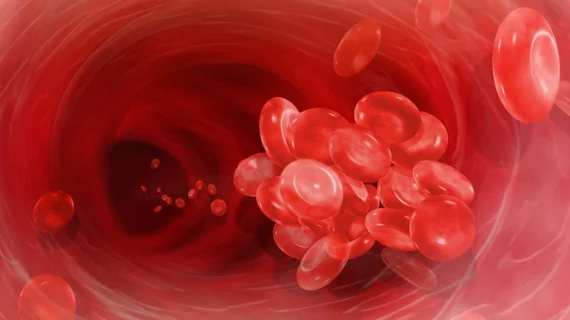Late-breaking results of a trial presented at the European Society of Cardiology (ESC)’s 2018 meeting in Munich suggest a removable balloon is as effective as a permanent stent in unblocking small arteries.
The BASKET-SMALL 2 study, simultaneously published in The Lancet, enrolled 758 cardiac patients with a first-time lesion in an artery smaller than three millimeters in diameter. Around half of the pool, many of whom presented with coronary artery disease or an acute coronary syndrome, was randomized to receive a standard, drug-eluting stent, while the other half received balloons coated with iopromide and paclitaxel.
Jeger et al.’s work centered around the comparison of drug-eluting stents and their drug-coated counterparts, the latter of which are approved in Europe to treat small arteries that have become blocked a second time. The authors said permanent stents in small arteries, though used routinely in the U.S., carry considerable risk, like the possibility that tissue will grow inside the stent or thrombosis will occur. Stent thrombosis could easily trigger a heart attack or stroke, they wrote.
“The potential benefits of a stent-free option to treat small blocked arteries are numerous,” Jeger said in an ESC release. “With no permanent implant left after the procedure, the problem of tissue growth and clot formation within the stent is eliminated.”
Such a solution could also mean there might not be a need for prolonged treatment with anticlotting medicines, he said, which have been controversial since they boost a patient’s risk of bleeding events.
Over the course of their study, Jeger and co-authors found no significant difference in outcome between stents and balloons. At the 12-month endpoint, 7.5 percent of patients who’d received a balloon and 7.6 percent who’d received a stent had experienced a major cardiovascular event. Rates of cardiac death, nonfatal heart attack, target vessel revascularization and major bleeding all remained similar between the groups.
“The BASKET-SMALL 2 trial met its primary endpoint of non-inferiority for major adverse cardiac events at 12 months,” Jeger said. “This is a long-awaited milestone in clinical evidence for the drug-coated balloon technique, which so far has primarily been used for the treatment of in-stent restenosis.”
He said the results of his study show promise for safer cardiac treatment.
“Drug-coated balloon angioplasty has the possibility to become the standard treatment for small blocked arteries,” he said. “We will continue to monitor patients in the trial for a further two years for major adverse cardiac events, stent thrombosis and bleeding.”

